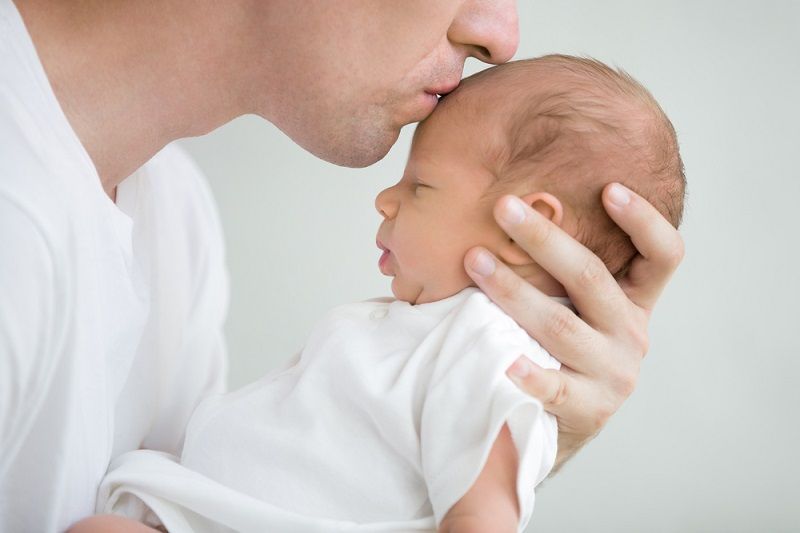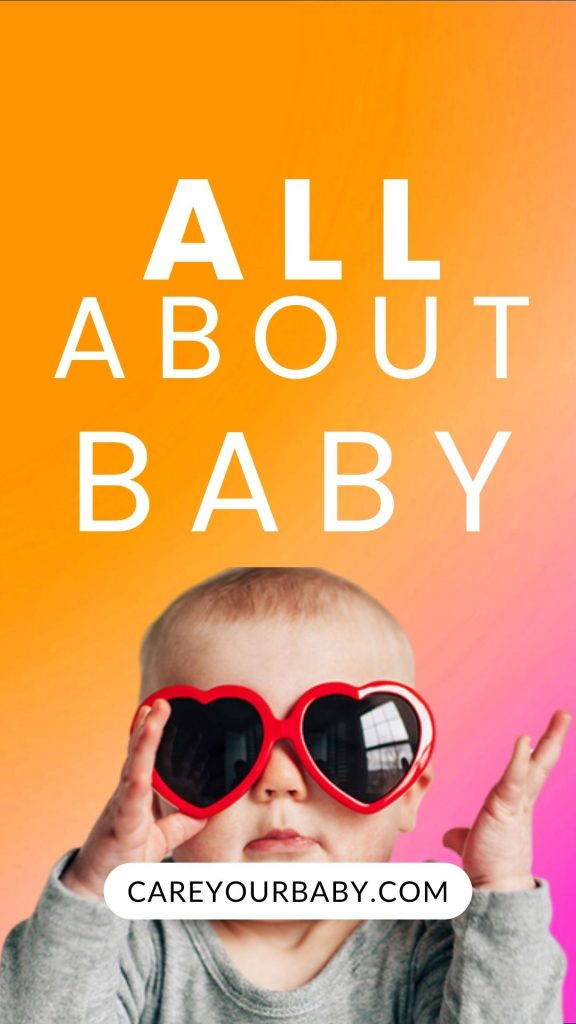The journey of parenthood is a tapestry woven with laughter, tears, and countless cherished moments. As we marvel at those tiny fingers grasping our own or watch in awe as our little ones take their first steps, we also find ourselves eagerly anticipating the charming milestones that transform infants into curious toddlers. Among these delightful developmental feats is the sweet and endearing gesture of a baby’s first kiss. But when exactly does this tender rite of passage occur?
In this article, we explore the fascinating world of infant milestones, delve into the nuances of emotional development, and uncover the age ranges that often mark the arrival of those precious, slobbery smooches. Join us as we navigate the heartwarming stages of your baby’s growth and discover the magic behind their first affectionate peck.
Understanding the Development of Baby Kisses

As your little one grows, you’ll start to notice a delightful evolution in their social interactions, particularly in the way they express affection. Kissing is one of the sweetest milestones, often appearing as early as **12 months**. At this stage, babies may begin to mimic kissing gestures; they might lean in or bring their lips to someone’s cheek with a soft approach. This beautiful expression is a significant step in their social development, showcasing their ability to connect with others emotionally. Observing them practice their budding affection can fill a parent’s heart with joy, as these gestures start off as purely instinctive.
As children continue to develop, their kisses become more intentional and heartfelt. By around **18-24 months**, you might witness a shift from random pecks to clearer signs of affection, such as **giving kisses** on command or initiating them independently. These displays can take many forms, including slobbery open-mouth kisses, gentle pats, and even cheek rubs. Understanding these quirks is essential, as each baby’s kissing style is unique, often reflecting their personality. Here are a few ways to recognize and celebrate this intriguing development:
-
- Expressive Gestures: Look for signs like leaning forward or turning their head towards you.
-
- Imitation: They might copy kissing sounds or gestures they’ve observed from adults or older siblings.
-
- Affectionate Reactions: Notice when they share kisses during play, showing their understanding of give-and-take in relationships.
Tracking your baby’s journey into the world of kisses can be just as significant as monitoring their other developmental milestones. Here’s a simple table to illustrate typical ages for these affectionate actions:
| Age Range | Kissing Milestone |
|---|---|
| 12 months | Starts mimicking kissing gestures |
| 18-24 months | Begins giving kisses on command |
| 2-3 years | Develops personal kissing style |
Recognizing Milestones in Early Emotional Expression
As babies grow and develop, their emotional expressions become increasingly nuanced, marking significant milestones in their communication. Initially, infants convey their feelings through cries and coos, but as they approach the 6-month mark, you may start witnessing a broader spectrum of emotions. At this stage, they might express excitement through squeals or wide smiles when interacting with loved ones. The formation of social bonds becomes evident, paving the way for them to enjoy reciprocal exchanges like playful interactions and laughter.
By around 12 months, the transition to more affectionate gestures becomes a delightful spectacle for parents. **Kisses, hugs, and even playful head butts** may emerge as the baby begins to imitate behaviors they observe in their caregivers. Recognizing these moments is crucial, as they signify not only emotional growth but also a budding understanding of love and attachment. It’s important to celebrate these milestones with them; interactions such as blowing kisses or making cute sounds can enhance this affectionate repertoire. Below is a simple table highlighting key milestones in early emotional expression:
| Age | Milestone |
|---|---|
| 6 Months | Responsive smiles and laughter |
| 9 Months | Gestures like waving and reaching |
| 12 Months | Imitation of kisses and hugs |
Encouraging Affection: Activities to Promote Kissing
Creating a nurturing environment that encourages affection can significantly enhance your baby’s emotional development and parenting bond. Incorporating playful activities into your daily routine is a wonderful way to motivate your little one to express affection through kisses. Here are a few **fun activities** to consider:
-
- Mirror Play: Use a mirror to show your baby their reflection. Make silly faces and encourage them to mimic you. This could lead to precious moments of them leaning in for a kiss!
-
- Story Time: Choose books that feature characters kissing or hugging. As you read, pause to incorporate kisses between characters, prompting your baby to imitate them.
-
- Musical Games: Sing songs with playful lyrics that involve kissing or blowing kisses. Dancing and laughter can prompt spontaneous affection from your little one.
As your baby develops, they start to mirror the affection they receive from you and become naturally inclined to give kisses. It’s important to respond positively to their attempts, reinforcing that kissing is a loving and joyous interaction. Ensure you capture these moments by documenting their kissing milestones in a fun way. You could even create a simple **kissing milestone tracker** like this:
| Age (Months) | Kissing Milestone |
|---|---|
| 6-9 | Starts imitating kisses |
| 10-12 | Gives slobbery kisses |
| 13-18 | Offers kisses on command |
Common Concerns About Kissing and Baby Socialization
As parents marvel at their baby’s development, it’s natural to wonder about various milestones, including the first kisses. However, many might worry about the implications of encouraging such affectionate gestures. Here are some **common concerns** surrounding kissing and how it plays a role in a baby’s socialization:
-
- Hygiene Issues: Parents often fret about the transfer of germs through kissing. Babies have developing immune systems, making them more vulnerable. It’s essential to consider who is giving the kiss and the hygiene practices before allowing kisses.
-
- Social Boundaries: Teaching children about personal space and consent is vital. Parents should gently guide their little ones to understand when and where it’s appropriate to show affection, making sure they feel empowered to define their comfort levels.
While these concerns are valid, kissing can also foster emotional connection and healthy social development. As infants grow, they learn to read social cues through interactions with caregivers and peers. It’s crucial to note the importance of **role modeling** in these situations. Here’s a brief look at how socialization milestones progress:
| Age Milestone | Social Behavior | Potential Kissing Behavior |
|---|---|---|
| 6-12 Months | Imitation of facial expressions | No direct kissing, but open-mouth gestures |
| 12-18 Months | Showing attachment to caregivers | First hand-to-mouth kisses for familiar faces |
| 18-24 Months | Understanding simple social cues | Intentional kisses, especially for family members |
Q&A
Q: When do babies typically start giving kisses?
A: Babies often start to show affection through kisses around the age of one. At this stage, their gestures may be more like open-mouthed smooches or wet pecks, as they are still learning how to express their feelings and mimic social interactions.
Q: What influences a baby’s ability to give kisses?
A: A multitude of factors can influence a baby’s ability to give kisses, including their emotional development, social interactions, and environmental cues. Babies are keen observers; they learn by imitating the behaviors of parents and caregivers who show affection through kissing.
Q: How can parents encourage their babies to kiss?
A: Parents can encourage kissing by modeling affectionate behavior. Regularly giving kisses to the baby and expressing affection in front of them can help them understand what a kiss is. Additionally, playful interactions that involve gentle face-to-face contact, like tickling or cuddling, can motivate babies to mimic these affectionate gestures.
Q: Are there different kinds of kisses that babies give?
A: Yes! Babies might express affection in various ways, such as slobbery pecks, gentle nuzzles, or pressed lips. As they grow older and refine their motor skills, their kisses may become more deliberate and controlled. Each type of kiss is a unique expression of their affection and developmental stage.
Q: What other milestones are related to kissing?
A: The ability to give kisses is often linked with several other developmental milestones, such as gaining emotional awareness, fine motor skills, and social engagement. As babies learn to recognize and respond to emotions, they may also begin to develop the ability to offer comfort through kisses or hugs.
Q: Can the way a baby kisses indicate their emotional development?
A: Indeed! A baby’s kissing behavior can reflect their emotional growth and attachment styles. For example, a baby who exhibits a strong inclination towards spontaneous kisses may have a secure attachment to their primary caregivers, indicating a healthy emotional bond.
Q: What should parents do if their baby is not giving kisses by a certain age?
A: It’s essential to remember that every baby develops at their own pace. If a baby isn’t giving kisses by around 12 months, there’s usually no cause for concern. Parents can continue to model affectionate behaviors and engage in nurturing play to encourage emotional development. However, if there are concerns about other aspects of social or emotional development, consulting a pediatrician might be beneficial.
Q: What is the significance of a baby giving kisses?
A: The act of kissing is a significant milestone that symbolizes affection, attachment, and social bonding. When babies start to give kisses, it signifies not only their growing emotional awareness but also their understanding of social interactions and relationships, laying the groundwork for future connections.
To Wrap It Up
As we journey through the tender milestones of your baby’s development, the sweet moment of a kiss is just one of the many delightful treasures to look forward to. Each little smooch signifies not only affection but also a significant stride toward emotional and social growth—a reminder that as they learn to express love, they are forming bonds that will last a lifetime. While every baby blooms at their own pace, understanding these stages can help you appreciate those fleeting moments of connection. So, savor each tiny kiss, each giggle, and each kick, for they are pieces of a larger story—your baby’s unique narrative of love and discovery. Keep observing, enjoying, and embracing these milestones, for they are the building blocks of a beautiful relationship that will evolve with time. Happy parenting!

